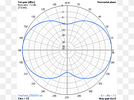-
You can now help support WorldwideDX when you shop on Amazon at no additional cost to you! Simply follow this Shop on Amazon link first and a portion of any purchase is sent to WorldwideDX to help with site costs.
-
The Feb 2025 Radioddity Giveaway Results are In! Click Here to see who won!
inverted v direction for hf
- Thread starter nfsus
- Start date
it really depends on your dx goals. for me i would probably go with a ne/sw orientation. that way you can hit most of the usa but still have the possibility to get some Europe or pacific contacts on occasion. granted it is just a dipole and not a beam but still
Agree with this for the same reasons.ne/sw orientation
Have you checked your true location for true north? You may find out you're off a bit which may be a good thing. My location is really NE even though the house which my antenna mast is attached to appears to be true north. This is perfect for me because I want NE broadside for my antenna.
A dipole will provide a broad range of RF on each side. Even a Beam antenna isn't a laser so the RF range from center towards the ends of the antenna isn't as significantly lower in dB gain/loss as one may think.
I get plenty of Europe, Africa, and some middle east Asia along with contacts into the Pacific Islands, Japan and Asia along with many Oceania continents and Islands from just 1 antenna.
If you don't have a compass, there are many free cell phone apps that work just fine.
Good luck!
Last edited:
My ocfd is a little north east to a little south west with the feedpoint at 65 feet both ends at about 40 and I have had great luck hitting all of Europe some Africa and South America and the Pacific besides here in the states.
thats on 27mhz. ive read that as the freq changes, that the lobes change too. im using 40 and 80 meters mostly right now.you don't have to worry about being exact in your antenna direction. the lobes are so broad on an inverted v that if you get it in the general direction the results should be favorable. Again, it doesn't have the radiation pattern of a beam. Just point it and have fun.
View attachment 59460
Actually it applies to ALL frequencies. The exception being if the legs are several quarter wavelengths long like if you were operating a half wave dipole for 80m on 20m or 10m. Then the antenna develops lobes that tend to align with the direction of the wire itself and becomes more end fire than broadside. If you are using an 80m or 40m VEE on 80m or 40m,ie the fundamental frequency for which it was cut, it becomes essentially omnidirectional. I ran an 80m half wave inverted VEE fed with ladderline on all bands and there was essentially no directivity on 80m or 40m and hard to determine on 20m.thats on 27mhz. ive read that as the freq changes, that the lobes change too. im using 40 and 80 meters mostly right now.
Picture is worth 1000 words. Unless i draw it. This is my current setup. I dont know off hand the slope angles. I'd say about that much. By the nanovna it looks good so I'm running it. But I want more more more. I do plan on going about 10ft higher later this week to see what effect it has based on using wwv as a constant signal. Dotted line is a 4ft high metal fence. Roughly 130ft between a and c. 40 degrees north on short side, 175 degrees on long side according to the apple compass
Last edited:
Unless you can get the antenna minimum 60 ft above ground average. Then don't worry about directivity...Put it up and use it! 

All the predictions of directivity and best signal will be useless until it's been up and used for at least 6 months.
Put it up, have fun!
All the Best
Gary/W9FNB
All the predictions of directivity and best signal will be useless until it's been up and used for at least 6 months.
Put it up, have fun!
All the Best
Gary/W9FNB
dxChat
- No one is chatting at the moment.
-
-
@ Geoexplorer69:Coax question. I just put up a new Sirio monsoon base antenna with 100’ of rg8u coax testing with myMFJ antenna analyzer shows 1.4 swr at 26.965mhz and a 1.1 at 27.405 mhz . When I checked the ohms it’s steady a 30 ohms across the entire bandwidth.
-
-
-



